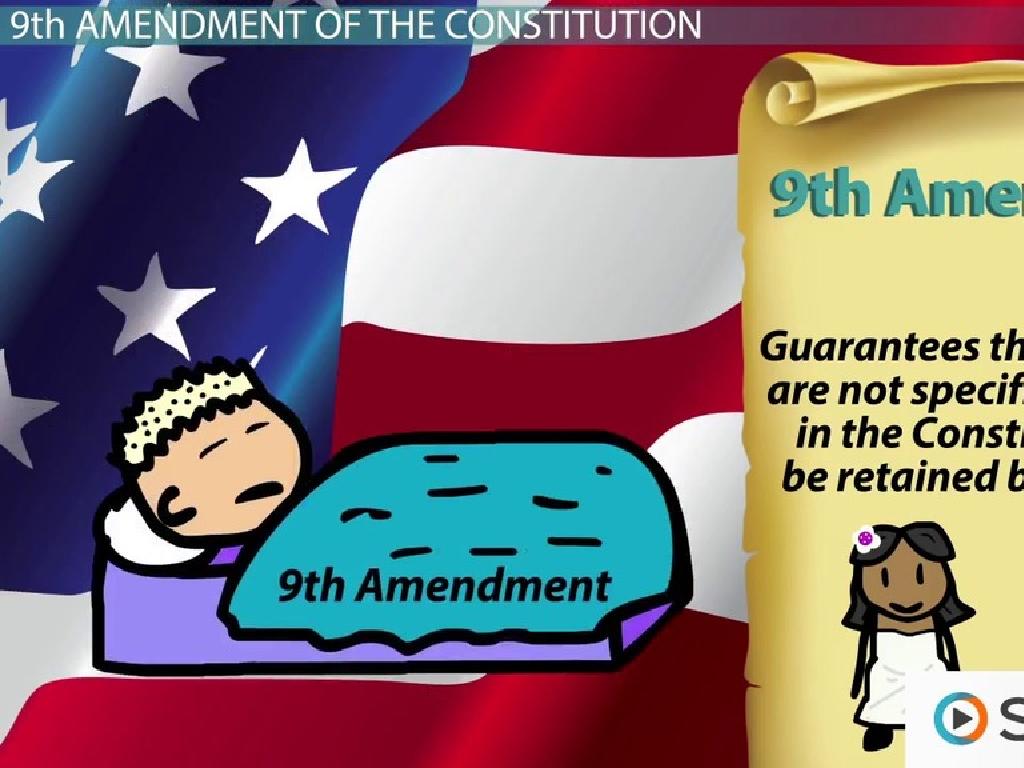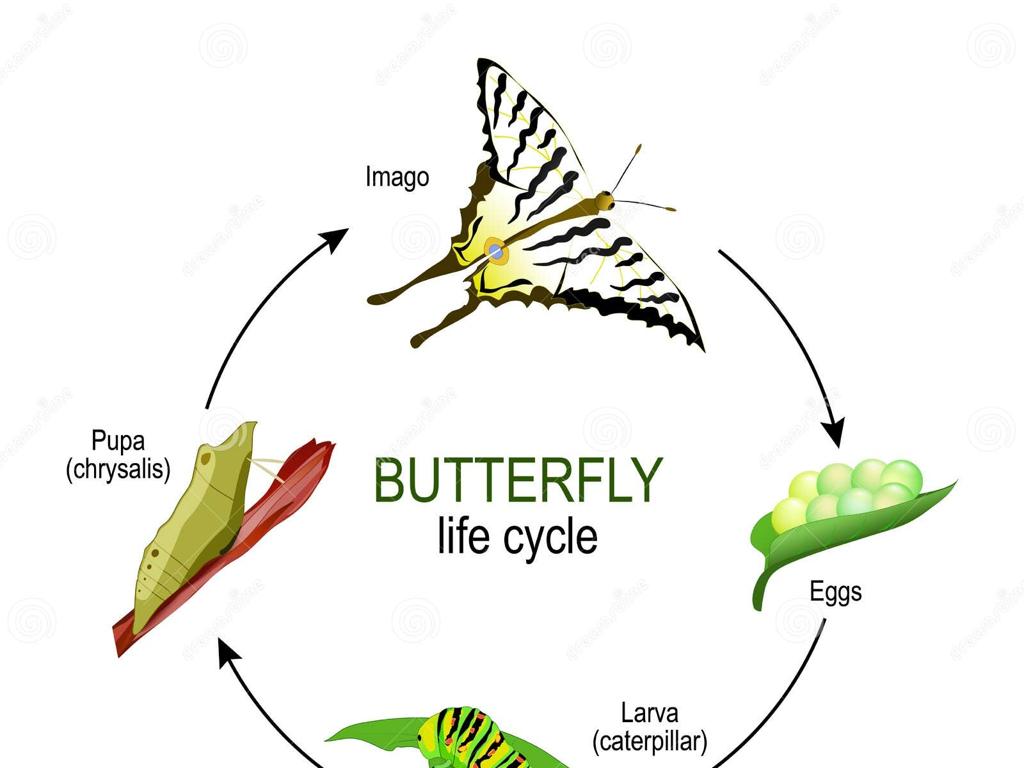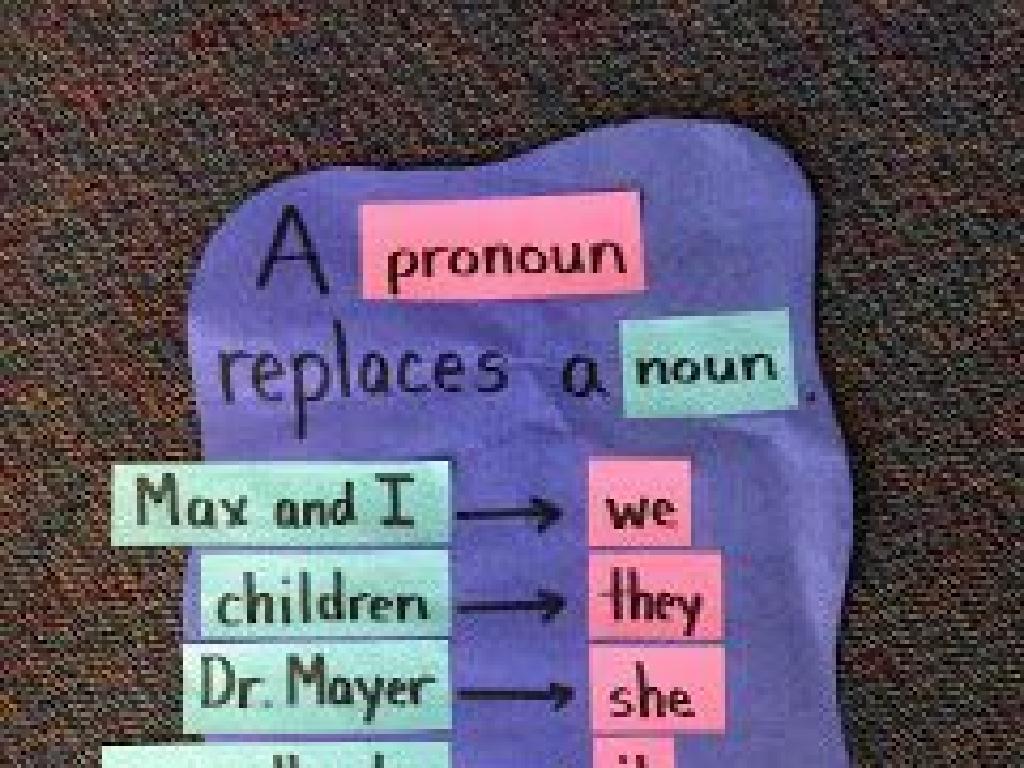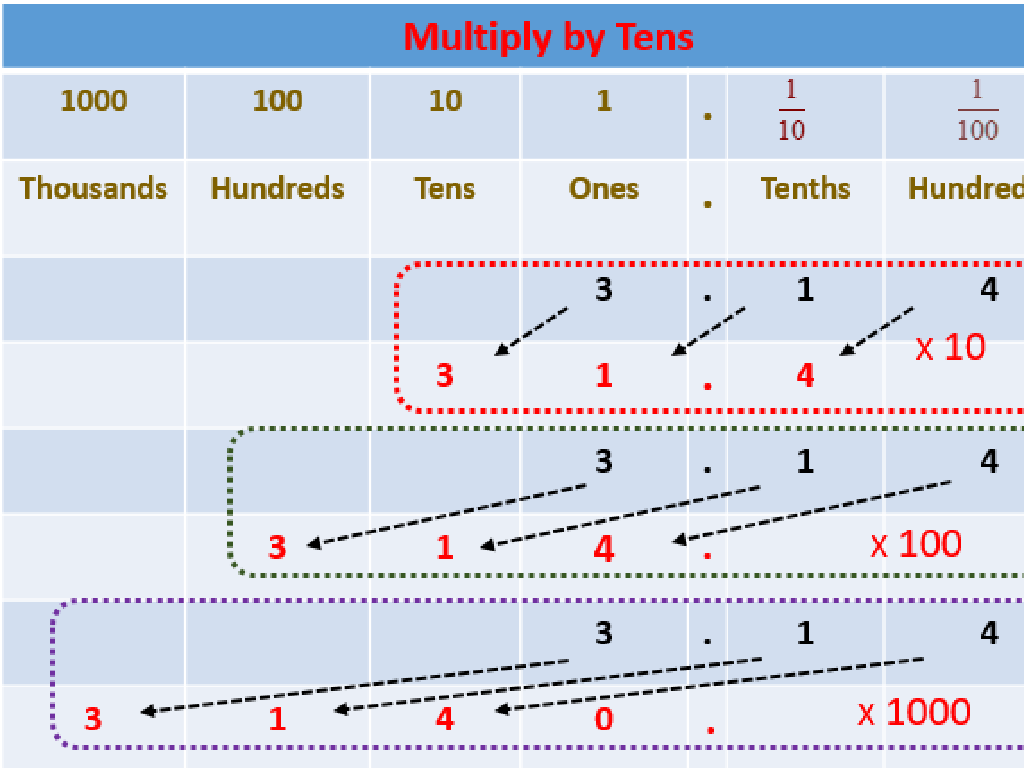Investigate Shadows
Subject: Science
Grade: Kindergarten
Topic: Light And Sound
Please LOG IN to download the presentation. Access is available to registered users only.
View More Content
Exploring Shadows
– Today’s topic: Shadows!
– Make a shadow with your hand
– Use your hand to block light on a wall
– Shadows are everywhere
– Notice shadows indoors and outdoors
– What creates a shadow?
– Light blocked by an object forms a shadow
|
This slide introduces the concept of shadows to Kindergarten students. Begin by explaining that a shadow is a dark shape made when an object blocks light. Encourage the children to experiment by making shadows with their hands and observing shadows around them. Explain that shadows happen when something stops the light from reaching a surface, creating a dark outline of the shape. This will set the foundation for understanding how light travels and how it interacts with objects. Activities can include making shadow puppets, tracing shadows, and discussing how the sun’s position changes shadows throughout the day.
Exploring Light and Shadows
– Light comes from sources
– Like the sun, lamps, and flashlights
– Light helps us see
– It lets us see colors and shapes
– Imagine a world without light
– Shadows need light
– No light, no shadows!
|
This slide introduces the concept of light to Kindergarten students. Begin by explaining that light is all around us and comes from various sources such as the sun, which we see in the sky, or lamps and flashlights that we use inside our homes. Highlight how light is essential for us to see the world, allowing us to notice all the colors and shapes that make up our surroundings. Discuss what it would be like without light, leading to the concept of darkness and setting the stage for understanding shadows, which are formed when light is blocked by an object. Use simple and relatable examples to make the concept clear, such as turning on a flashlight in a dark room or noticing how the sun creates shadows on the ground during the day.
What Makes a Shadow?
– Objects block light to create shadows
– When light can’t pass through an object, it makes a shadow on the other side.
– Shadows are dark shapes on surfaces
– Look for the dark area where the light can’t reach.
– Making shadows with our hands
– We can use our hands to block light and form fun shadow shapes!
|
This slide introduces the concept of shadows to Kindergarten students. Begin by explaining that light travels in a straight line until it hits an object that it cannot go through. When this happens, a shadow is formed on the side of the object away from the light source. Show them examples by using objects or your hands to block light from a flashlight or lamp, creating shadows on a wall or floor. Encourage the children to experiment with their hands and fingers to make different shadow shapes, such as a bird or a dog. This activity will help them understand the basic principle of how shadows are created and is a fun way to learn about light and shadows.
Shadow Shapes: Fun with Hands!
– Making shadows with hands
– When we block light with our hands, we create shadows.
– Moving hands to change shapes
– Try wiggling, twisting, or joining hands for new shapes.
– What shapes can you create?
– Can you make a bird, a dog, or a butterfly with your hands?
|
This slide introduces the concept of shadows to Kindergarten students in a fun and interactive way. By using their hands, students can explore how light is blocked to form shadows and how moving their hands can change the shape of the shadow. Encourage the students to experiment with creating different shapes and to think creatively about what kind of shapes they can make. This activity not only teaches them about shadows but also helps develop their motor skills and creativity. During the next class, have a shadow show and tell where students can demonstrate the shapes they’ve created and explain how they did it.
Fun with Shadows
– Shadow puppets are fun
– Use hands to create shapes like birds or dogs
– Animals cast shadows
– Have you seen a bird’s or your pet’s shadow?
– Trees and buildings have shadows
– Look how tall buildings stretch their shadows
– Shadows change with the sun
– Shadows are long in the morning and evening, shorter at noon
|
This slide is designed to introduce Kindergarten students to the concept of shadows in a fun and engaging way. Start by explaining what shadows are and how they are created when light is blocked by an object. Use hand gestures to show how to make simple shadow puppets, such as a bird or a dog, and encourage the children to try making their own. Discuss how animals, trees, and buildings also create shadows, and if possible, show these examples through a window or during outdoor time. Highlight how the position of the sun in the sky changes the length and direction of shadows, making the learning experience interactive by observing shadows at different times of the day.
Shadow Size and Direction
– Shadows: Long or Short
– Morning & Evening: Longer Shadows
– When the sun is low, shadows stretch out long.
– Noon Time: Shorter Shadows
– A high sun at noon makes our shadows short.
– Sun’s Position Affects Shadows
– Shadows change with the sun s place in the sky.
|
This slide introduces the concept of shadow size and direction to Kindergarten students. Begin by explaining what a shadow is and then discuss how shadows can vary in length. Use visual aids or demonstrations to show that early in the morning and later in the evening, when the sun is low in the sky, shadows appear longer. Conversely, at noon, when the sun is directly overhead, shadows are at their shortest. This is a great opportunity to take the students outside to observe real shadows at different times of the day, if possible. Encourage the children to make predictions about the length of shadows at various times and to test their hypotheses during outdoor play.
Let’s Investigate Shadows!
– Exploring shadows with a flashlight
– Shadows change with light movement
– Moving objects closer and farther
– Does the shadow grow or shrink?
– Observing shadow sizes
– Notice how the shadow’s size changes
|
This slide is designed to engage Kindergarten students in a hands-on activity to explore the concept of shadows. The activity uses a flashlight to demonstrate how light creates shadows and how these shadows change when the light source moves. It also encourages students to experiment with the distance between the object and the light source to observe changes in the shadow’s size. Teachers should guide the students through the activity, asking probing questions to help them understand the relationship between light, objects, and shadows. The goal is to foster curiosity and basic understanding of light and shadows through direct observation and experimentation.
Class Activity: Shadow Play
– Let’s make our own shadows
– Use flashlights to cast shadows
– Shine light behind objects to see shadows appear
– Move objects to change shadows
– Try moving closer or farther and see the difference
– Observe how shadows behave
– Notice how shadows stretch and shrink
|
This activity is designed to help Kindergarten students explore and understand the concept of shadows in a fun and interactive way. Provide each student or pair of students with a flashlight and a variety of objects such as toys, cutouts, or their own hands. Guide them to shine the light on the objects and observe the shadows cast on a wall or surface. Encourage them to experiment by moving the objects closer to and farther from the light source and observe how the size and shape of the shadows change. Ask them to describe their observations and what they think is happening. This will help them grasp the basic principles of light and shadows. Possible variations of the activity could include using colored filters to create different shadow colors, making shadow puppets with their hands, or drawing the outlines of the shadows to see how they change over time.






